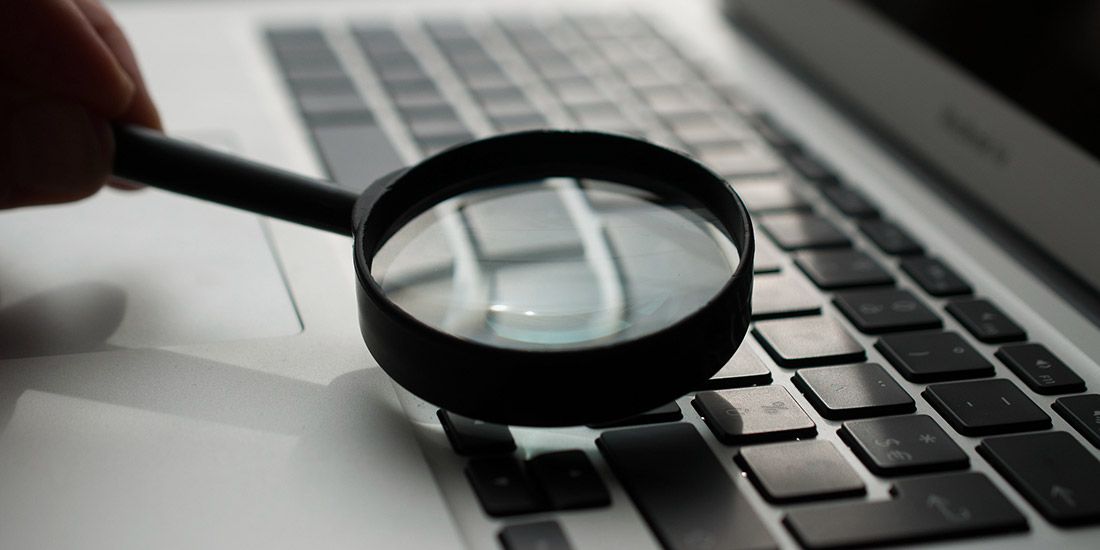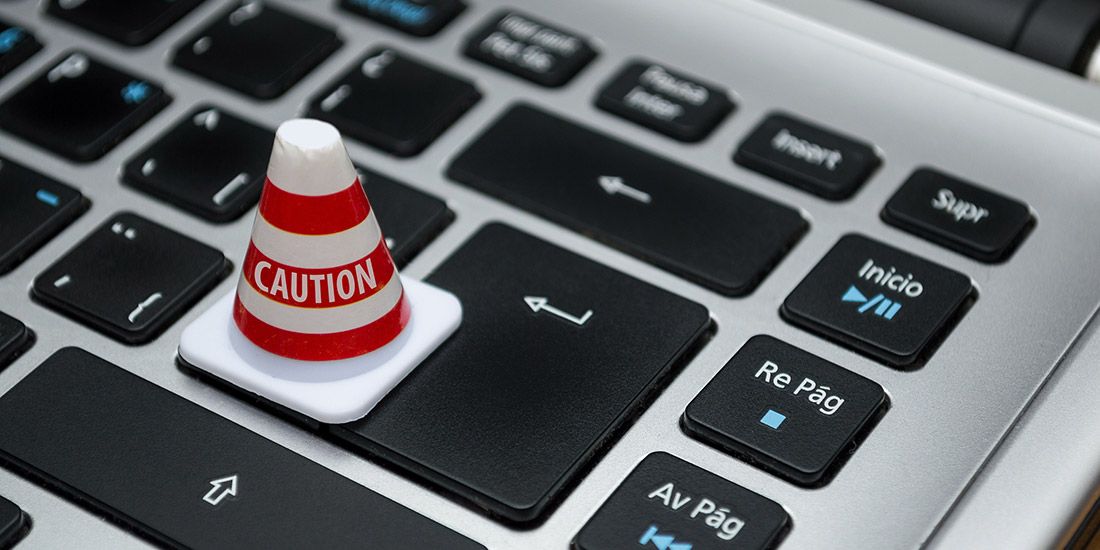How to spot fake news and steer clear from clickbait
13th April, 2021 | Home / Blog / Broadband and technology / How to spot fake news and steer clear from clickbaitReading time: 6 minutes

We’re all aware of the importance of using reliable sources and fact-checking ourselves online, but how do you spot fake news?
In a world where so many of us use the internet as a source for news and information, it’s more important than ever to be able to distinguish between fact and fiction online.
Did you know, according to Ofcom’s Online Nation: 2020 report, a colossal 98.7% of online adults in the UK access news and information websites, spending an average of 12 minutes on these sites each day?
Ofcom’s News Consumption in the UK report also revealed that half of us use social media as a source of news too, but these platforms have little in the way of ensuring all information is factually correct, leaving you second guessing if you’ve fallen victim to a sensationalised story.
So, to steer clear from the clickbait, follow our quick how-to guide to become a pro at picking out those bogus stories in next to no time.
What is fake news?

Fake news is just that: a news story or article – usually on the internet – that is untrue. There are two main types of fake news:
Deliberate
This is when the author publishes a story knowing full well that it’s a lie.
Wondering why they’d do this? You can thank a little thing called ‘clickbait’…
They’ll often publish the story for the purpose of spreading misinformation as ‘clickbait’, which is a trick used to get a lot of people to click on links to visit a website and interact with their online content.
Partially true
A partially true story may have elements of truth in them to make them seem more believable, but they’re still not completely accurate.This could be because the author hasn’t fact-checked the article properly, or they may have intentionally fabricated some of the story to encourage more people to read and react to it… ah clickbait, we meet again!
8 ways to spot fake news

Don’t worry, there are a number of ways to help you stay ahead of the trickster’s online. Start by asking yourselves these 8 simple questions to rule out any doubt:
1. Is this the first time you’ve heard the story?
If you’ve not heard this anywhere else, you might want to do some extra research to see if you can back it up with other trusted sources online, on the TV or the Radio.
If you’re looking at an article on social media, a quick scan of the comments will usually let you know if its fake news before you click the link – people tend to be quick off the mark to expose those crafty clickbaiters!
2. Have you heard of the organisation before?
Can they be trusted, or are they well known for clickbaiting?
This may help determine whether you’re likely to rely on them for any newsworthy information now or in the future.
3. Does the website look real?
Is it pretending to be a trustworthy website? Want to know for sure?
Check for a padlock at the top of the address bar to confirm if the site is trusted and secure.
4. Are they using a normal web address?
We know people aren’t always who they make out to be online, and this is the same for websites too.
Make sure you take a closer look at the URL – sometimes people pretend to be another website by using the same web address, with a few different letters. (We know, it’s a sly move!)
Websites usually end in .com / .co.uk / .org. If they’re not using these and their website address ends with unusual letters instead, take extra caution!
5. Do the photos or videos look photoshopped?
Does something look a little fishy to you? Perhaps the photos look like they have been edited or tampered with in some way, or maybe you spot the branding looks slightly different to usual…
Whatever it is, always steer clear if you’re in doubt.
6. What is the overall quality of the article?
Are there spelling and grammar mistakes?
Fake websites often look less professional and have far more mistakes across the site, similar to those dodgy emails that arrive in your junk mail without your say so.
But don’t let that fool you, sometimes fake websites can look very convincing too!
7. Does the story sound true?
Normally, if something sounds completely out of the realms of possibility, that’s because it is!
Fake and outrageous stories get people talking and clicking – but not everything you read is true, so make sure you use your own judgement too.
8. Is the story biased?
Trustworthy news sources should be objective and focus on the facts, rather than opinions. Sometimes fake news is also created to target a particular person and damage their reputation, so you may see negative bias towards them in these situations too.
Headlines are the biggest giveaway of this. If you see a headline that seems like it’s written to intentionally stir up reactions or suggest how you should feel about the subject before you’ve decided yourself – it’s probably clickbait, and it’s sneaky business too!
More ways to identify fake news

If you still have concerns over what’s real and what’s phony, you may need to do some more research before you take the article’s word as gospel. Here’s how to further investigate if it’s clickbait.
Check the tone:
Go to the main pages of their website and check out their mission and beliefs. Are they biased? (A great example of this is a conspiracy website!)
Check their contact information:
For obvious reasons, people who create fake news don’t want to give away their address or personal details. So, if their location address looks fake, or they only provide an email address; this can be a telltale sign of fake news.
Check the author:
What other articles have they written? Are they a journalist, or even a real person? It’s not uncommon for some people to hide behind fake names – so be sure they are who they say they are first.
Check their sources:
Have they given supporting sources to back up what they’ve said?
If they have, make sure you check these! Sometimes people cite an official source to make their content seem more trustworthy, but once these sources have been investigated, they don’t support what is being said at all. If they’ve cited a report, check the facts and figures match up.
Check the date:
Sometimes old news stories are shared as if they are happening currently and are related to other events, when they aren’t relevant. This happens a lot relating to politics.
Sometimes old news stories are shared as if they are happening currently, and twisted to make them seem relevant to other events, even when they’re not. This happens a lot with celebrity fake news stories and in politics too.
Check the context – is it a joke?
If something sounds really outrageous, it may just be satire. An example of this is theOnion.com. These articles aren’t usually labelled as jokes or satire, so they can often seem misleading to a new reader.
Google search:
Sometimes the quickest way of getting an answer is a quick Google search of the article’s headline. Often the results will be other websites and people who have come across the fake news and are warning others.
Check your own biases:
This can be difficult, but sometimes when we believe something, we only listen to information that confirms what we already believe. This is called confirmation bias. This can often make us believe news too quickly, without making sure it’s true.
If in doubt, you can always ask those around you for advice, or visit a fact-checking website such as FactCheck.org, Snopes.com, or PolitiFact.com.
There we have it – all the tools you should need to unravel any fake news story! Did you find this guide useful? Don’t forget to help your friends spot fake news by sharing this article on Facebook and Twitter!
Related Articles
Check availability:


